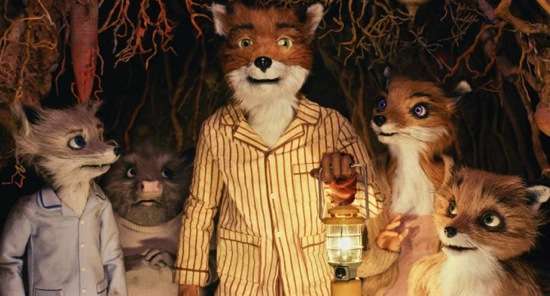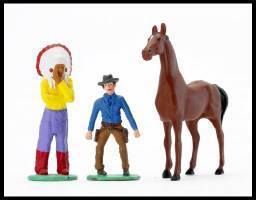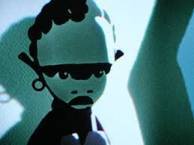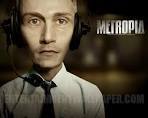-
SFFS 4th Annual Animation Festival
SAN FRANCISCOFILMSOCIETY
4TH ANNUAL SAN FRANCISCO INTERNATIONAL ANIMATION FESTIVAL
______________________

STILL FROM WES ANDERSON'S THE FANTASTIC MR. FOX
George Clooney provides the voice of the wickedly cool Mr. Fox in a new animation featured at the London Film Festival (as was Mr. Clooney himself), which will be the opening night presentation of the SFFS's ten-feature series of international prize-winning animated films that runs from Nov 10-15 in San Francisco this year. Anderson uses classic stop-motion techniques to tell the Roald Dahl tale of a wily fox at war with greedy farmers. (SFFS's link to the Mr. Fox trailer.)
SAN FRANCISCO FILM SOCIETY 4TH ANNUAL ANIMATION FESTIVAL
The SFFS's five-day series at the Embarcadero Cinema (with events at Mezzanine and the Apple Store) aims to show the range and vigor of the animation genre. While the Wes Anderson feature is posed to be a big slick US box office draw -- but is largely a British production, American avantgardist Lawrence Jordan starts ifoff the festival with a cutout short film, Ein Traum der liebenden (A Dream of Lovers). Jordan will man a 16 mm analytic projector himself, varying frame rate and rhythm to go with a performance by local musical duo Pale Hoarse -- so the audience gets to watch the animation process, and the projection itself is a performance. Further experimental shorts by other artists will follow, and this is all part of a "kickoff celebration" held at Mezzanine, at 444 Jessie Street. Opening night at the Embarcadero features Fantastic Mr. Fox. The next day at the downtown San Francisco Apple Store Joy Mountford will give a free lecture and demonstration of the latest trends in "visionary information design."
Other main events are as follows:
The Breakdown. A series of short animations using the medium for analytic purposes to study objects, events, and relationships.
A Town Called Panic/Panique au village. (In French.) This feature-length stop-motion animation that appeared at Cannes is based on the Belgian TV series by Stephane Auber and Vincent Patar. It's a film all made up using tiny figurines to tell the story of a journey to the center of the earth where a parallel society of pointy-headed and dishonest creatures reigns. Voices of French actors Jeanne Balibar and Benoit Poelvoorde are heard. The filmmakers revel in the jerkiness of the figures in (stop) motion. (A Town Called Panic teaser.)
Walt Disney's Alice Comedies. This series from the very earliest days of Disney world (1923 and 1927) placed a real girl in an animated environment. A lecture and demonstration by Disney experts Russell Merritt and J.B. Kaufman made in collaboration with the new Disney Family Museum.
Super Massive Suspension: Nate Boyce vs. Amy Hicks. Another lecture-demo, exploiting the fact that the Bay Area houses some of the world's major current animators -- Pixar and Lucasfilm, Image Movers, PDI Tippett Studios and many independent animators of note.
The Best of Annecy. Ten short animations culled from this prestigious European festival.
Musashi: The Dream of the Last Samurai. Anime director Mamoru Musashi weaves together history and myth to provide a historical account of the development of Japanese swordsmanship in the Edo period as pioneered by Mushashi Miyamoto. Though we've seen animations used for non-fiction lately in films such as Persepolis and Waltz with Bashir, this is a new wrinkle for anime. (Mushashi trailer.)
Play It by Eye. Another compendium, this one of 17 music videos consisting of animation. Autokratz! Ladyhawke! Metallica! Paper Mountain Men!
Somewhere Where I Don't Know Where I Am This collection of shorts focuses on environments.
Metropia (Tarik Saleh) (In English.) This Swedish animated feature about a gray, dystopian world sounds like 1984 on valium. That could be good or bad. We'll find out. Also featured at the London Film Festival, like Mr. Fox. This features the voices of Vincent Gallo, Juliette Lewis, Udo Kier, Stellan Skarsgard, Alexander Skarsgard, abd Sofia Helin. (Metropia teaser.)
So, this SFFS event promises to be an excellent look at what's going on in animation today, with a slight focus on the experimental and technical side and many short samplings of different artists. There's great variety here, and a wealth of talent.
The SFFS provides full information about the animation festival on their own web page of the event.
Last edited by Chris Knipp; 11-19-2009 at 02:16 AM.
-
Fantastic mr. Fox (wes anderson 2009)
FANTASTIC MR. FOX (WES ANDERSON 2009)

WES ANDERSON WITH (HUMAN) STOP-MOTION FIGURES FOR MR. FOX
Detalied comment: Anybody can tell you that an animated film written by Wes Anderson and Noah Baumbach and directed by Mr. Anderson will be more about family rivalries and quirky characters than about cute animals, despite Fantastic Mr. Fox's basis in a famous Roald Dahl children's tale that's been called "great for reading aloud to three- to seven-year-olds." Dahl was a Brit, and much of this production is English. But it's a hybrid of Yank and UK elements, with the animals, headed by George Clooney as Mr. Fox and Meryl Streep as his wife, with Anderson regulars like Jason Schwartzman, Bill Murray, Owen Wilson, Angelika Huston, and Adrien Brody, are a star-studded and somewhat cultish American voice crew. The animals outwit three despicable farmers and steal their livestock for food. These agricultural baddies, described by Dahl as "Boggis and Bunce and Bean/One fat, one short, one lean./These horrible crooks/So different in looks/Were nonetheless equally mean," ae not only humans, but in the film contrast in all being played by Brits. Mr. Fox premiered as the gala opening night film at the London Film Festival, with Mr. Clooney on hand to add glamor. Media reaction was positive, though privately some English viewers were less pleased with the "Americaniation" of the material.
The stop-motion animation using stuffed dolls -- especially with Anderson's reliance on extreme cloxeups -- may result in the foxes and other critters appearing seedy at times, but the process is executed so slickly and photographed so brightly (with heavy emphasis on orangey earth colors) that the contrast with more hi tech pixilations and computerizations may not be so great to the untutored eye as some think. More serous for the kid audience is, well, how serious the material is, as well as more complicated, in this enlarged version of the Roald Dahl story. Take the quote offered by IMDb:
Mr. Fox: [sighs] Who am I, Kylie?
Kylie: Who how? What now?
Mr. Fox: Why a fox? Why not a horse, or a beetle, or a bald eagle? I'm saying this more as, like, existentialism, you know? Who am I? And how can a fox ever be happy without, you'll forgive the expression, a chicken in its teeth?
Kylie: I don't know what you're talking about, but it sounds illegal.
Not very funny, and right over the heads of the seven-year-olds; but still, pretty cool stuff for an animated children's tale. Fox (one wants to say Clooney, so ably does he insinuate himself into the role) is often referring to the fact that they are finally just "wild animals." And the film is most captivating when the various creatures eat -- explosively devouring a pile of food and leaving crushed fragments -- or burrow into the ground -- again with explosive, instinctive animality. One wishes these hints of the savage creature inside the talking animated model came more often, and more surprisingly. These are places where Mr. Fox feels truly original.
It might have been nice if the film hadn't gotten so elaborately caught up in the grand war campaign between Fox and his friends (no, there's no Fassbinder in here) and the three agri-business meanies (that's what they almost become in the film) played by Robin Hurlstone (Boggis), Hugo Guinness (Bunce) and Michael Gambon (Beane). Though some British viewers have chafed at this, the intimate dysfunctionality (so typical of the maker of The Royal Tennenbaums, The Life Aquatic and The Darjeeling Limited) provides the best stuff, the moments when the dialogue sparkles and charms and makes you think. The script is so subtle, even with stuffed animals, at nuancing the conflicts between Fox and his wife; at conveying their son Ash's (Schwartzman's) insecurities and his rivalries with the too-talented visiting cousin, Kristofersson (Eric Chase Anderson), that you may wish the film focused more on the intimate stuff. As with Anderson's other movies, it's character, not action, that matters. So you kind of wonder why there is so much action. Nonetheless there are action sequences that work very well, which is perhaps where the animaters come in, the vast Visual Effects crew, and cinematographer Tristan Oliver -- who seem to have had a life of their own and partly had to fend for themselves in London, with Anderson directing things from a distance, via e-mail, from his Paris apartment. But if the direction was phoned-in, it seems to have worked pretty cussing well (an oddity of the script is its substituting the word "cus" where a stronger swear word, including the F-one, is meant). Fantastic Mr. Fox is an animated feature that's both sophisticated and winning. Those (including a couple of name New York reviewers) who say this is Anderson's best movie yet, however, may just not like his other movies that much. Wes does wonderful work here with the voices of Clooney, Streep, Schwartzman, Wilson, and the rest, and he's shown he can coordinate a great animation team but he does even better work as an auteur when he gets to put human bodies as well as voices on the screen. Still, this is the year's smartest and most winning animated feature.
FANTASTIC MR. FOX shows at the SFFS Animation Festival November 11, 2009, but also opens in limited US theatrical release November 13. It premiered at the London Film Festival October 14th and opened in UK theaters October 23.
Last edited by Chris Knipp; 06-22-2015 at 05:16 PM.
-
A town called panic (aubier, pater 2009)
STEPHANE AUBIER: A TOWN CALLED PANIC/PANIQUE AU VILLAGE (2009)

A TOWN CALLED PANIC (PANIQUE AU VILLAGE): (In French.) This feature-length stop-motion animation that appeared at Cannes is based on the Belgian TV series by Stephane Aubier and Vincent Patar. It's a film all made up using tiny figurines to tell the story of a journey to the center of the earth whre a parallel society of pointy-headed and dishonest creatures reigns. Voices of French actors Jeanne Balibar (The Duchess of Langeais) and Benoît Poelvoorde (of Man Bites Dog) are heard. The filmmakers revel in the jerkiness of the figures in (stop) motion. (A Town Called Panic teaser.)
Detailed comment: You might not know this is the same stop-motion technique used in Wes Anderson's Fantastic Mr. Fox. Auber and Patar have collaborated ( and voice two main characters) in a film that's not only simpler and more primitive in effect (figures even have little stands on the bottom like plaster toys) but more truly uniquely for children. Clearly this cast and crew had more modest means and objectives and motives. They didn't get glamorous superstars to voice the parts and they worked visibly from scratch, bringing to life recreations of kids' little Plasticine toys, a typically mismatched collection including a horse, an Indian, a cowboy, mechanical tractors, a piano lesson, and moving them around on surfaces that could be a village, or could be a train set or a display under a Christmas tree.
These are actually spin-offs from a TV series that Belgian, French, and maybe French Canadian kids would know. They were featured in five-minute films on the arty but widely watched French TV outlet Canal Plus and later dubbed by "Wallace and Gromit" producer Aardman Animations for export to other outlets such as Nicktoons in the U.S.; they can be found on YouTube.
The Town Called Panic effect is much more boldly artificial and crude than the stuffed but charming furry creatures in Wes Anderson's film. This is a thing of slapstick and chases, upended figures and screeches and scrambles. "An antic little joy ride," the Variety reviewer has called it, and that's about right. Shown November 13 at the San Francisco Film Society's 4th Annual Animation Festivial as one of three animated features (the others: Wes Anderson's Fantastic Mr. Fox and Tarik Saleh's Metropia), it enjoyed a preview at Film Forum in New York the following week, and begins a limited US theatrical release at Film Forum December 16. The feature is not dubbed like the Aardman Animations shorts, which is better to capture the flavor of the original, of course.
Last edited by Chris Knipp; 08-07-2014 at 12:21 AM.
-
The best of annency
THE BEST OF ANNENCY

STILL FROM HEILBORN AND ARONOWITCH'S SLAVES
A showing of ten short animated films from the French Annency festival.
Detailed comment: "The Chick" apparently won first prize -- why? The purity of it. The simple images in red and black, mostly, the sprightly jive dance of the strange lady, who seems to be a prostitute. When she finishes sleeping with the blind man, how come there is a whole row of white canes along the wall? Anyway, there's something unforgettable about that jive dance as the lady gets dressed for sex. Socha's short film has a classic feel, and also seems to have a will and spirit of its own. It's hard to assert individuality, or avoid solipcism, in a short animated film, and some of the examples fall into smug negativism, like the Spanish "El Empleo" (Employment), by Santiago Bon Grasso, depicting a variety of humans used as objects, leading up to the surprise that the main character's job is literally to be the door mat for his boss. Some of these are too repetitive, or don't quite hang together, or say something we've heard before, like "The Man in the Blue Godini (Jean-Christophe Lee), a piece about people who wear orange and a few mavericks who insist on wearing blue. Why does everybody go naked from the waist down, or from the waist up? Maybe Lee is saying something or maybe he's just indulging a taste for the bizarre. There are two films that stand out from the others because their content is far from the drawing board. "Madagascar: Carnet de Voyage" (which is in French without subtitles) is alive because it's about a place, Madagascar, and it's full of real faces, even real signs and documents and photos. The method used is one of the simplest -- watercolors in which parts move around -- but achieves some of the richest and most individual effects. Lots of smiles here. A tremendously appealing and atmospheric work by filmmaker Bastien Dubois. At the opposite extreme, "Slaves," made by Hanna Heilborn and David Aronowitsch, uses very striking and stylized visuals accompanying an actual recording of a young boy and girl who were slaves in Sudan who are interviewed about their experiences, which are too horrible to repeat. The stylization helps protect the innocence of the victims and protect us from the horror of what they tell (subtitles translate their tribal dialects). A Swedish, Norwegian, and Danish film. "Madagascar" and "Slaves" show no matter how elaborate or playful the visual ideas, it all comes down to what you have to say. "Please Say Something," which seems a very rough cut and doesn't quite tell a coherent story, contains the line, "Some day I will figure this out." I couldn't. But there were a lot of stylish images. However, it was the humanism of "Madagascar" and "Slaves" that made them memorable.
Last edited by Chris Knipp; 08-07-2014 at 12:23 AM.
-
Mushashi: The dream of the last samurai
Nishikubo Mizuho: THE DREAM OF THE LAST SAMURAI

MUSHASHI: THE DREAM OF THE LAST SAMURAI: (In Japanese.) Anime director Mamoru Musashi weaves together history and myth to provide a historical account of the development of Japanese swordsmanship in the Edo period as pioneered by Mushashi Miyamoto. Though we've seen animations used for non-fiction lately in films such as Persepolis and Waltz with Bashir, this is a new wrinkle for anime. (Mushashi trailer.)
Detailed comment: This particular Mushashi (there was Inagaki's classic trilogy of the Fifties, starring Toshiro Mifune) is primarily a lecture about the famous swordsman of the late sixteenth and early seventeenth centuries in Japan. There's much more screen time given in this anime film to a funny little old man addressing us and referring to historical texts, than to dashing sequences of Mushashi himself. Hence the visuals are not very exciting for the most part.
We learn that Mushashi, who ended up as a teacher and devote of Zen and other aristocratic arts such as the tea ceremony and archery, was a man of humble origins who won over sixty duels when very young and also fought in large battles with success, thus garnering such fame as a swordsman that he sought aristocratic status, not so much for money but to pursue his calling as a martial artist. He wanted to be given a corps of horsemen, unable personally to afford even a single horse for himself. He wanted to develop swordsmanship techniques for fighting on horseback, which our lecturer suggests connects him with the knights in armor of the West. His attempts to achieve higher rank seem to have largely failed, bu he still was enormously respected and his offspring gained status. Oddly enough he preferred using a long straight wooden sword than the beautiful and valuable curved samurai blades that are so famous. For his purposes the wooden ones handled better. He won a famous duel with Sasaki Kojiro by arriving very late and using a very short wooden sword. Details of all these events are confused and lost in conflicting legend.
Understanding some of the details, such as Mushashi's participation of the war between the Toyotomi and the Tokugawa clans, requires a fuller knowledge of Japanese history than the average American viewer is likely to possess. Obviously Mushashi had a rich and varied career with many vicissitudes, emerging as a pioneer of sword techniques, master swordsman, and the author of various treatises on swordsmanship and conduct, practicing the artistic side of Bushido, a real renaissance man. He is famous for teaching the use of two swords at once, one short and the other long. Our little lecturer makes much of the The Book of Five Rings, which he began in his late fifties and finished not too long before he died at sixty-three. The film's lecturer bewails the fact that in the Russo-Japanese war the Japanese lost faith in hand-to-hand combat, at which they had traditionally excelled, and swords and swordsmanship were regarded as barbaric. Then there was a turnaround, with Mushashi being celebrated in kodan (oral chanted storytelling), and books on "Bushido, (actually a new word)" the "spirit of the samurai" becoming influential. It's only after fifty minutes of lecturing that the film moves into kodan mode and tells Mushashi's story in sweeping black and white anime images during the last fifteen minutes or so.
Viewers who come to Mushashi expecting beautiful, dashing images and dramatic battle sequences will be largely disappointed, though they will learn something about Japanese cultural history, if they pay attention. But with its jazzed-up kodan music, pop closing theme song, and corny use of western chestnuts like Strauss waltzes, Chopin, and Beethoven's Ninth, this may be designed more for a young Japanese audience than for westerners. Anyway, at best it's just a little footnote on the great Samurai movies of the past.
Director Mizuho Nishikubo and writer Mamoru Oshii probably deserve equal credit for the 72-minute film. Derek Elley of Variety calls this "Most likely the first example of the anime form being used for a documentary" and adds "the pic can be appreciated by all Asiaphile viewers."
Seen as part of the San Francisco Film Society's 4th Annual Animation Festival, November 2009, the film was released in Japan in June 2009.
Last edited by Chris Knipp; 08-07-2014 at 12:13 AM.
-
Play it by eye
PLAY IT BY EYE: A SERIES OF ANIMATED MUSIC VIDEOS

GEFFROY DE CREDY'S REX THE DOG BUBBLICIOUS
PLAY IT BY EYE: Another compendium, this one of 17 music videos consisting of animation. Autokratz! Ladyhawke! Metallica! Paper Mountain Men!
Detailed comment: Most of these tended to look more like traditional music videos than animations. Justin Francis' "Timberland with the Hives: Throw It on Me" doesn't break out of the music-vid mold; it just frames performances images cutely in cartoon squares with talk balloons. Claire Carré's "Big Mistake: Tim Fite" is the opposite extreme: it uses a wavy-line traditional hand-animated look: ho hum. Ditto with Diamond Dogs' video for The Cribs' "Mirror Kisses": just doodling on distressed black-and-white film of a boy band warbling ain't anything new. Frater's "Ladyhawke: 'My Delerium'" may contain a drawn-and-watercolored segment, but it's a drearily traditional music video with drearily traditional music. Sean Pecknold's claymation for Fleet Foxes' "White Winter Hymnal" does okay: it captures nicely the dogged sweetness and lazy rhythms of the song -- less is more, even in music videos, as Sean might have considered before embarking upon his overly-ingenious Grizzly Bear one (also included in the show). Anime works still better in Robert Hales video for Britney Spears' "Break the Ice": the pop slickness of the images gibes satisfyingly with the plastic sheen of Spears' voice. Only it's hard to sustain an interest in such music for a full four minutes, and the anime doesn't fully connect with the song. Zach Keller's captures of San Francisco scenes work much better in his video for Love Like Fire's "William." This is a smooth narrative, with a good rhythm that stays perfectly on message.
Special mention should be made of Roboshobo's elaborate concoction to accompany Metallica's "All Nightmare Long." In fact roles are reversed, and the song becomes the accompaniment to the deliciously creepy 9-minute part-distressed-film-part-animation tale of biological warfare between the US and Russia, told from the Russian point of view. It succeeds because the disconnect between music and image is intentional. The story is told with captions. The Metallica song works a hallucinogenic heightening effect upon the film. (Watch it here.)
Perhaps the best efforts in this series break out of any traditional music video or animation mold into something with a more handcrafted look, like Hydra's "Passion Pit: The Reeling," which combines oddly dressed or masked revelers with torn paper collages.Kelly Sears' "Paper Mountain Man" uses collage too but its imagery is somewhat repetitious. Or Geffroy de Crecy's vid for Rex the Dog's 'Bubblicious:" : it hilariously uses stop-motion to create a little paper-box figure that turns into a rock singer, thus poking gentle fun at the song itself, and simultaneously showing animation and the process of making it. Very witty, and in the end the process of seemingly undermining the music winds up underlining and affirming it. Hiro Murai's vid for The Fray's "Heartless" is only partly animated: in the scene, a boy's classroom doodle as he muses on his would be girlfriend comes to life on the page but still remains a doodle. But this is witty too, because the doodle turns into the band playing. Very cute, and appropriate and astute: the film perfectly captures the mood of a young man who would sing the refrain, "How could you be so heartless?" And that's what a music video must do, crystallize and memorialize the music and truly illustrate it.
Watch Bubblicious.
Seen as part of the San Francisco Film Sociey's 4th Annul Animation Festival in November 2009.
Last edited by Chris Knipp; 08-07-2014 at 12:12 AM.
-
Tarik saleh: Metropia (2009)

METROPIA (TARIK SALEH): (In English.) This Swedish animated feature about a gray, dystopian world sounds like 1984 on valium. That could be good or bad. We'll find out. Also featured at the London Film Festival, like Mr. Fox. This features the voices of Vincent Gallo, Juliette Lewis, Udo Kier, Stellan Skarsgard, Alexander Skarsgard, abd Sofia Helin. (Metropia teaser.)
Detailed comment: Tarik Saleh, who made Metropia, is a Turkish graffiti artist living in Sweden and who made an effective 2005 documentary on Guantanamo interrogation techniques called Gitmo. Now he's turned to Orwellian sci-fi, with nods to Kafka and Hitchcock. The opening text of his gray, photo-realistic animated dystopia, which premiered at Venice and was shown at the London Film Festival, reads: The end of the millennium marked the end of many things. Natural resources dried up, the global financial markets crashed and the crisis that connected the fate of all people, still left the individual isolated in his ruin. It's 2024. We're in Sweden. Oil has run out, hence the construction of "Metropia," a new pan-European subway system. This computer animated film is built up out of actual photos using real people's faces and things. Everything is somber and dark and murky and grayish blue, but hey, it's Sweden; and there's a kind of beauty in the drabness, at least at first; visuals are not the weak point of this film. Where it bogs down is in its meandering and ultimately uninteresting plot.
Protagonist Robert (sensitively voiced by Vincent Gallo) is a dull call-center worker whose expressionless face and big soulful Keane eyes exude a preternatural calm; or is there massive Valium in the water system? After Roger starts hearing Big Brother (actually Stellan Skarsgard) talking in his head and responds by following pert, tough-talking Nina (a cold, slinky-voiced Juliette Lewis), which leads him into a meeting of gangsterish world leaders and their overlord, Ivan Bahn (the naturally ghoulish Udo Kier), head of the Trexx Corporation, which owns everything and is pushing an ominous (?) shampoo, whose ads feature Nina. The in-your-head talkers turn out to be nice lookalikes who take coffee breaks and have their own job insecurities. But somebody is plotting with Nina. Yes, this is one of those worlds where paranoia seems justified; but the dangers don't seem very imminent. This computer-animated photo-based animated film starts out promisingly and has an appealing (if transcendently drab) look with memorable visuals right up to the end, but the nearly-comatose quality of the main characters and the failure to generate suspense or build to a strong climax leads to a ho-him final feel.
Seen as one of three features in the San Francisco Film Society's 4th Annual Animation Festival in November 2009, this film was part of the London Film Festival in October (see Michuk's review). Metropia has been nominated for several prizes. It won the Future Film Digital Award at the Venice Film Festival and is slated for theatrical release in Sweden December 27, 2009. It is a production of Atmo Films.
Last edited by Chris Knipp; 08-07-2014 at 12:27 AM.
 Posting Permissions
Posting Permissions
- You may not post new threads
- You may not post replies
- You may not post attachments
- You may not edit your posts
-
Forum Rules





 Reply With Quote
Reply With Quote






Bookmarks